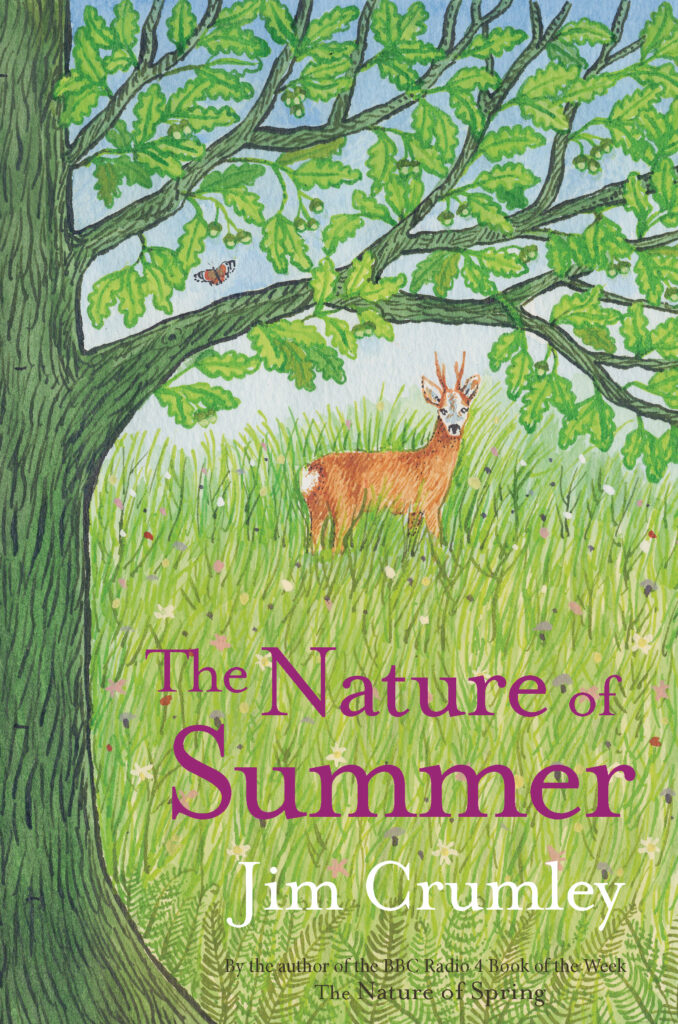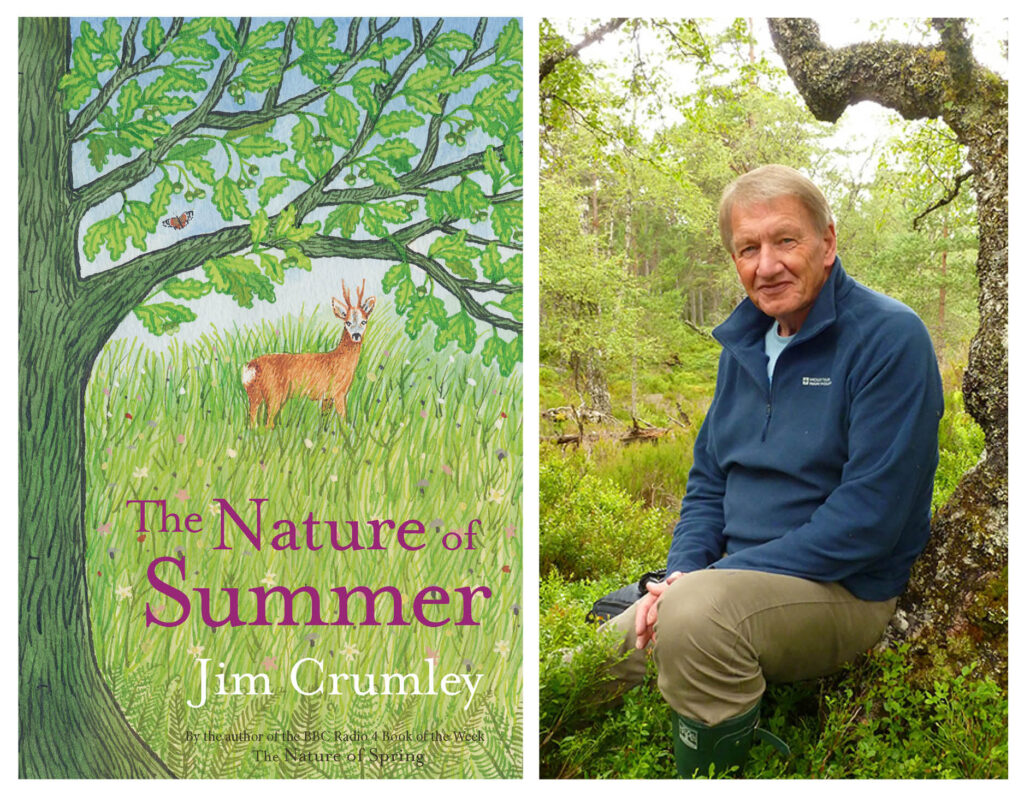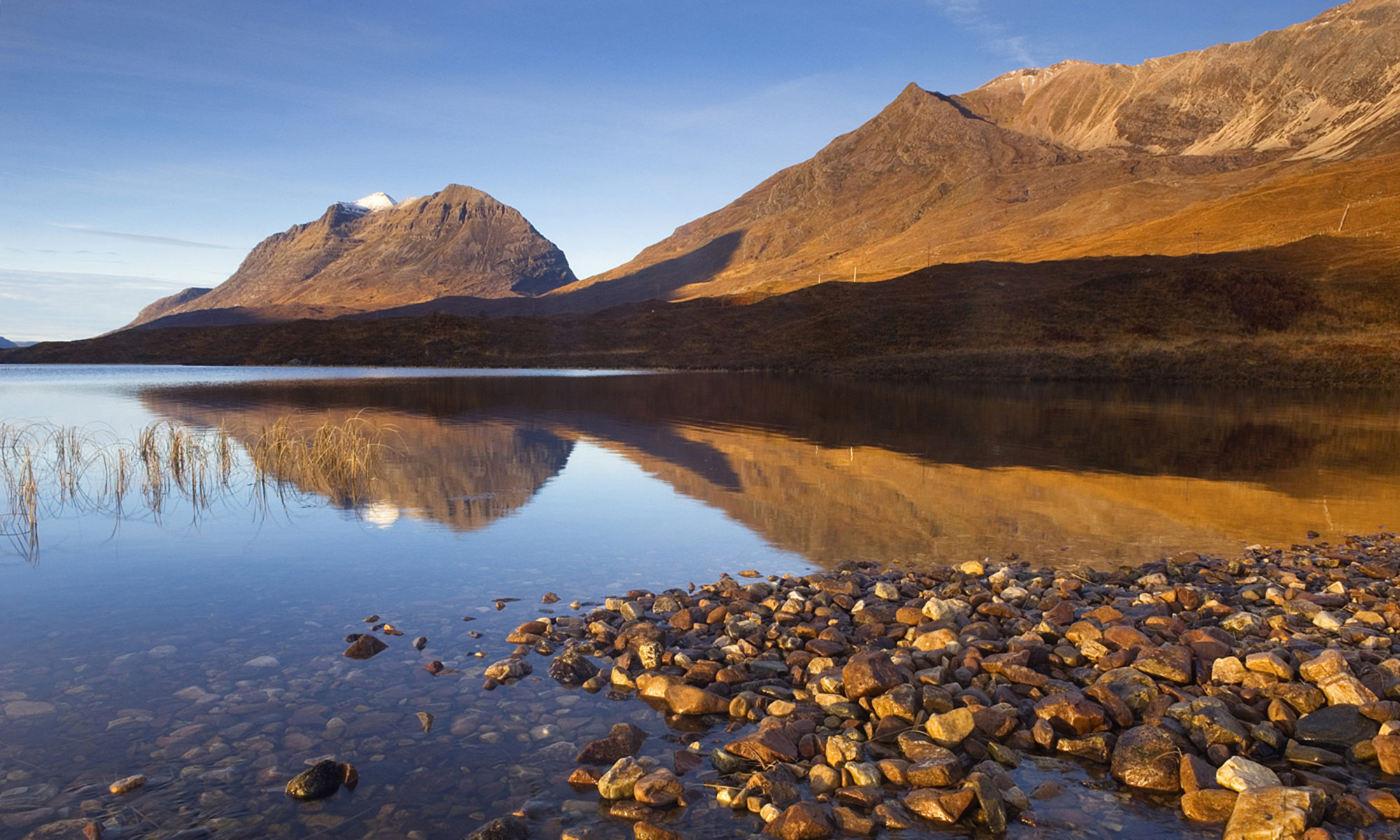The Nature of Summer by Jim Crumley, published by Saraband, has been shortlisted for the 2020 Highland Book Prize.

The Nature of Summer by Jim Crumley, published by Saraband (nature and environment).
In the culmination of his landmark four-part study of the seasons, the nature in Jim Crumley’s summer is burgeoning freely. Seals sing, brown hares bound, dragonflies dance. His silent vigils reveal not only an enchanting account of exuberant profusion, but the unfolding climate chaos. From declining puffin populations to the demise of entire glaciers, this is a world in crisis… and of everyday miracles on land, mountains, lochs, coasts and skies. Jim Crumley’s intimate portraits branch out beyond the heart of the Highlands to memories of summers past, exploring what is at stake as our seasons are pushed beyond nature’s limits.
During a writing career spanning 33 years, Jim has produced 40 books, almost all of them devoted to the wildlife, wild places and environment of Scotland. His most recent project was a quartet of books centred around the seasons. The final volume, The Nature of Summer, was published in 2020. Other books have featured beavers, eagles, swans and the Great Wood of Caledon. His 2010 book, The Last Wolf, rewrote the history of wolves in Scotland and argued the case for their reintroduction. Jim is also a columnist in the Scots Magazine.

Visit: www.jimcrumleynature.com
Extract from The Nature of Summer, ©Jim Crumley 2020, published by Saraband
The doe walked from tree shadows, where dusk had begun to gather, into the one patch of that small clearing where the last of the sunlight caught her, and there she stopped and there she stood and there she glowed. But the reddening sun was only on her head and neck and spine and the top half of her left flank. The rest of her was dark. She presented an almost eerie illusion, as if the top half of a deer was swimming through the trees and the woodland understorey. When she stopped, she floated.
How long before she would see me?
She was still then, apart from her ears, and these flickered with a restlessness that belied her outward calm. The ears looked too big for the size of her head and they were pale grey, almost white, when they turned towards me, and trimmed with a sharp lace of black. With these she tested every airt of the woodland and far beyond. But I knew the wind worked in my favour. So did my stillness and my woodland-shaded clothes, yet something gave me away and her head swung round and I was pinned to the oak tree by her double-barrelled, black-eyed stare. So I had the answer to my own question – how long before she would see me? – and that answer was about twenty seconds. Despite all the care I routinely take in such a situation, the deer is better attuned. She is of the woods and I am not. Each time I come back here, I have to re-acclimatise, shed influences from beyond the woods that – inevitably – I bring with me. And I am willing to bet that she will have known that I was here long before she trusted my stillness enough to cross the clearing and pause in that last scrap of evening sunlight.
A lesson falls into place here, a first commandment that cannot be repeated too often. In all our dealings with wildlife, from watching a roe deer cross a clearing on a summer evening to reintroducing lost species (wolf, beaver, sea eagle) with consequences that will endure for hundreds of years, it always takes time. Mostly, giving the required time to watch and learn and understand – letting nature take its course – is where our side of the bargain falls short.
The doe turned from side-on to head-on, and as she did so that low and intense sunlight travelled across her as she realigned head and neck and chest and back, until only her face and chest were brightly lit, lending her a faintly ghostly air. I wondered why she had turned like that. What I expected was that she would turn to face away from me then turn her head back to look at me down the length of her spine, ready for flight. But this had the air of something more confrontational, or perhaps just more contemplative, weighing up my threat, or absence of threat. Then she stamped one forefoot. A soft thud like a muffled drumbeat. Was that for my benefit, an invitation to leave the premises? Or else, a signal…?
A juniper bush shivered and her fawn materialised from its dark-green fleece and came to stand alongside her, a perfect miniature mirror image except that it lacked the sunlit patches, being completely in shadow. The fawn could have been no more than two months old, yet she had obviously acquired from her mother the art of the disconcerting stare. The penetrating effect of those four unblinking eyes pinning me to the tree amounted to rather more than the sum of the parts. The watcher watched – it is a circumstance that always unnerves and I never understand why. Was this not exactly what I sought to achieve? An engagement with nature on an equal footing, creatures of the same landscape.
I studied their double act. What were they thinking? Were they thinking at all? Then, without a sound, they both turned to their right as if it was a well-rehearsed manoeuvre, walked beyond the sunlight to a more open patch of ground, a distance of no more than twenty yards, and without another glance they both started to browse. The doe constantly raised her head to look back but I gave her nothing, no cause for alarm. I was oak-tree still. I hoped that the warmth and the admiration I felt for her and her offspring in that place at that moment would transmit, that she would catch the sense of it and relax.
A memory slipped into my mind. Alaska, 1998, Kodiak Island, thirteen grizzly bears in a quarter-of-a-mile-long arc of river. My guide, a benevolent giant of a man called Scott Shelton, advised me that there is only a problem if the bears pick up stress and anxiety from you. It makes them edgy.
So I had asked: “If you come in a spirit of warmth and admiration, can they pick up that too?”
He smiled. “Yes, of course. Of course they do. That’s how I go to work.”
These are the kind of people from whom I have learned how I should go to work, people whose paths I have crossed and for whom I have felt profound gratitude.
As I sat watching, and the deer appeared relaxed and the sun faded from the clearing and a bluish tinge of dusk began to infiltrate it, my mind went wandering off along an old roe deer path that had led to a similar encounter, the memory of which was initiated by that miniature mirror image when the fawn came and stood beside its mother. That old encounter had also involved a roe deer and her fawn, and what happened was this:
The two deer were ambling quietly, the doe about ten feet lower on the hillside than the fawn, which walked on a parallel contour. The fawn’s ears flicked suddenly forward, her head angled sharply to one side, and in that attitude she froze. For the moment, she could see what her mother could not. But the doe had seen the fawn’s reaction. From my position in the edge of the trees and about twenty feet below the doe, I could see the cause for concern now that the fawn’s sudden change of attitude had drawn my attention to it, too. A stoat was running easily along the deer path towards the doe, which was hidden by the lie of the land. First, the stoat saw the fawn above him, all eyes and ears. It stopped dead. It stood, in the manner of all mustelids, on its hind feet, brandishing its curiosity.
The doe came on cautiously, nose a-twitch, ears working. The stoat dropped to all fours, unaware of what was just beyond the rock by the next bend in the deer path. It ran on, stopped, stood, eyeballed the fawn again, dropped to all fours yet again, hesitated, stood again. Then in a kind of decisive frenzy, it hurtled round the rock only to meet the staring eyes of the doe a yard away. The doe’s front legs splayed wide and her head went down (I defy anyone not to think of Disney at that moment). The stoat effected an emergency stop and reared onto its hind feet once more, all in a single seamless movement, a singular feat of reflex and co-ordination. For two seconds, perhaps three, it took stock of the sorcery at work on that hillside. One moment it had ducked down past what it would presumably recognise as a young deer, the next the path was blocked by its hugely magnified mirror image (and that was what had cued in the memory of the encounter). Its response was to hit the rock, which was about eight feet high, and to scale it at a flat-out run. It was an impressive little feat of free mountaineering, but it had the unintended consequence of depositing the stoat by the ankles of the fawn. The stoat performed the nearest thing to a fast double-take I have ever seen in the wild, a two-footed, spine-stretching assessment of first the fawn and then the doe. Then, I think it saw me, and I was its final straw. It plunged into deep undergrowth and vanished from the face of the hillside. Both the deer watched it vanish. Then the doe also saw me, barked softly to the fawn, and they stepped off into the deepest shelter of the trees.

